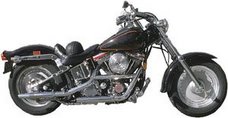Coating Cylinder Heads
One of the best applications for coatings is in combustion chamber areas. Coating the combustion chamber of a cylinder head can increase performance significantly. In addition, more compression can be run as the proper coating will provide resistance to detonation. Tuning changes can also increase the level of power generated. Coating the intake and exhaust runners can also impact performance. Coating the exterior and the area under the valve cover can improve heat management. By coating the combustion chamber, we reduce the amount of heat that escapes during the power stroke which means more of the heat generated is utilized in "pushing" the piston down. The coating also insulates the surfaces so that they absorb less heat, reducing the load on the cooling system and reducing the amount of dimensional change the head may see from the heat it absorbs. The coating functions in several ways: (1) To keep heat in (Thermal Barrier) (2) To move heat over the surface to reduce hot spots (Radiation) (3) Reflect heat into "cooler" or shrouded areas of the chamber (Convection) and (4) The coating retains less residual heat from combustion than other thermal barriers, thus transferring less heat to the incoming fuel charge (Reduced Thermal Transfer). Combining these features increases power levels, reduces part operating temperature, aids in reducing detonation and can increase fuel efficiency and reduce emissions. By transferring less heat to the incoming fuel charge detonation is reduced, as pre ignition which causes detonation, is generally the result of excessive heat absorption by the fuel as it enters the combustion chamber. By allowing the heat of combustion to be more efficiently used, the fuel charge is better combusted, allowing more compression while reducing the fuel quantity need (in most cases) and increasing power. By accelerating the burn rate of the fuel, through better heat management, less timing is needed to have the optimum burn occur at top dead center. CBC2 is the standard coating to be used, with CBX recommended for very high compression motors (13:1 and above) or for engines that have tight quench areas as well as Turbo Charged, Super Charged and engines utilizing Nitrous Oxide systems. Coating the ports helps with flow and provides additional thermal benefits. Coating the intake runner with a Dry Film Coating can reduce fuel drop out while insulating the incoming fuel from the heat of the head. Coating the exhaust with TLHB can improve flow by creating a very slick surface, while reducing the amount of heat that can pass from the hot exhaust flow into the head. CBC2 or CBX may also be used in exhaust ports, though they are not as "slick" as TLHB. Coating the exterior of the head with Tech Line's TLTD (Thermal Dispersant) allows for faster transfer of the heat that is absorbed from combustion, into the air flow around the head, thus allowing the head to run cooler. This will impact the amount of heat transferred to the intake manifold as well as reduce the heat that accessories will be exposed to, that are mounted on or near the head. When TLTD is applied to the area under the valve cover, better oil drain back is achieved as well as better thermal transfer to the oil, which is cooling the head and valve springs.
Friday, June 22, 2007
Subscribe to:
Post Comments (Atom)


No comments:
Post a Comment